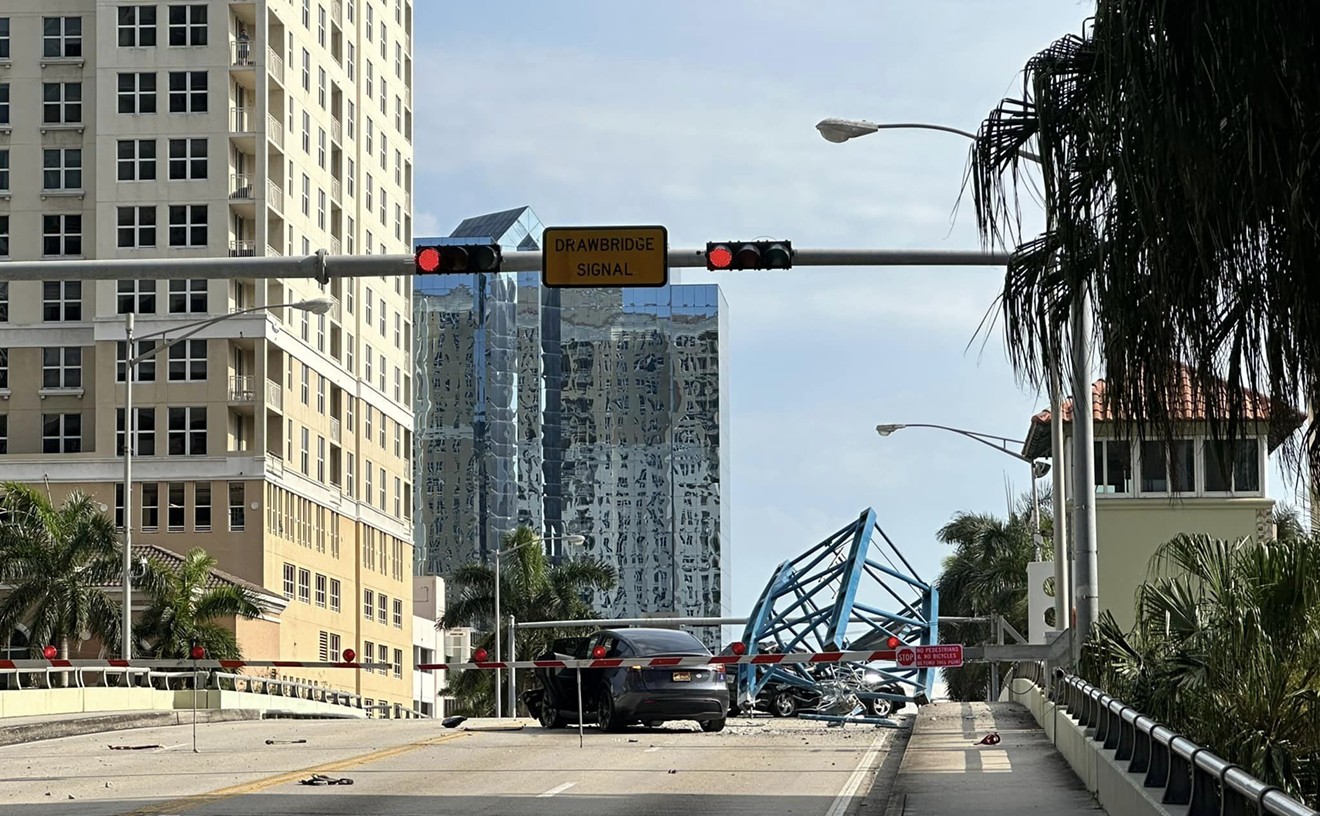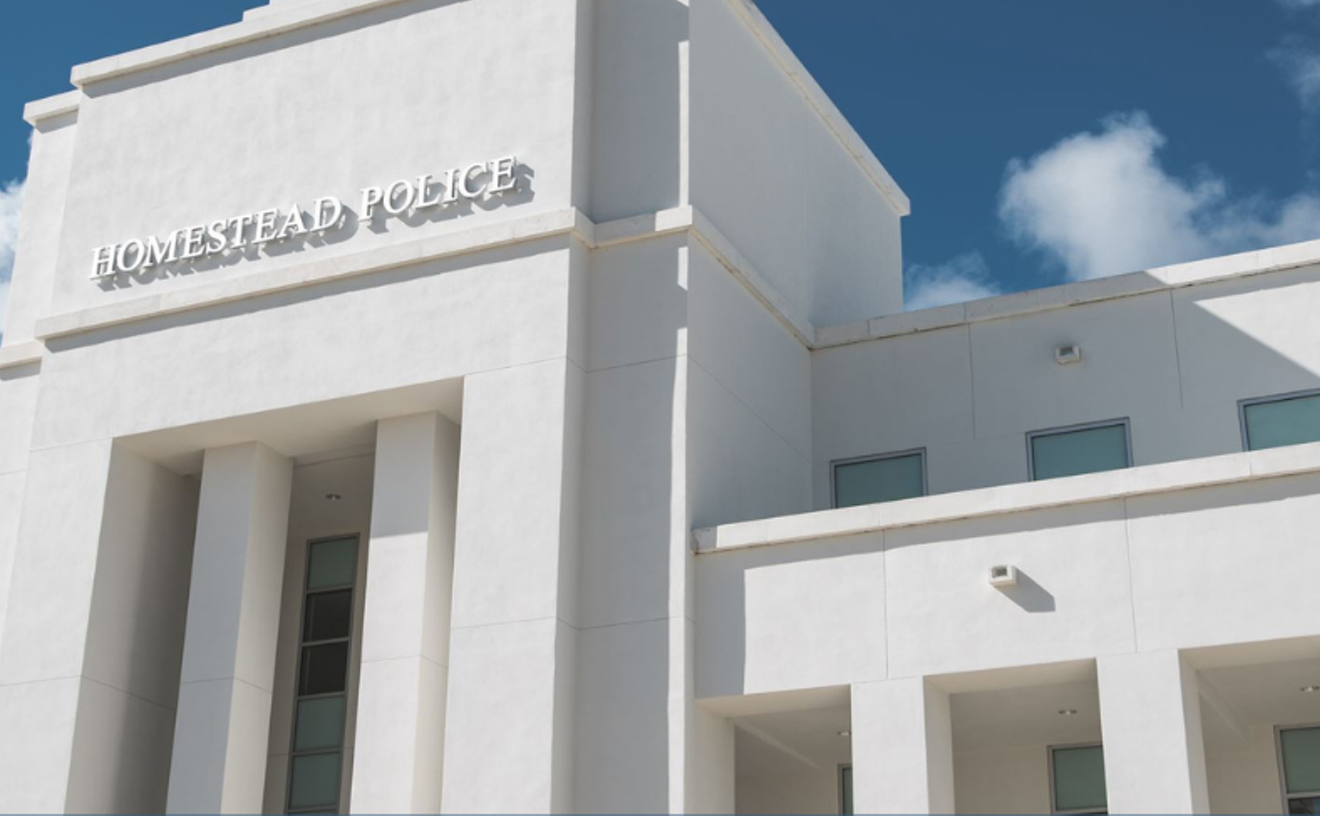Liao leans back in his insulated guard booth in front of a massive factory 69 miles southeast of Beijing. It's November 30, and a cold front has blown in off the Bohai Gulf.
Liao lights a cheap cigarette and stares for a minute at the buildings. Bulky columns of pale smoke billow into bracing air.
Outside the window is a long, white sign. In sky-blue English letters, it reads: KNAUF. Behind the security gate, a two-story, tin-roofed factory stretches four city blocks straight back to a murky pond. Garage-size piles of white, powdery gypsum litter the yard. Trucks motor out of the front gate loaded with hundreds of palettes of drywall, the sturdy heart of most new American homes.
Finally, Liao nods. His partner, Gao, waves a car through and then listens.
"Some people indeed say that the drywall Knauf Tianjin produces is toxic," Liao says cautiously in soft Mandarin. "Everyone in the company has heard about it."
In fact, this bustling factory is the epicenter of a global consumer disaster that reaches all the way to South Florida. Since at least 2004, hundreds of thousands of pounds of tainted drywall passed through these gates on the way to new homes in the United States.
Before '04, Chinese businesses such as Knauf Tianjin had rarely exported drywall to the States. But then a housing bubble inflated the demand of homes and depleted construction supplies. In South Florida, dozens of new condo towers sprouted along every stretch of beach and bay front, and hundreds of new golf-course-centered suburbs sprouted from Florida City to Jupiter.
The market exploded so quickly that American gypsum mines and drywall makers simply couldn't keep up. Chinese-based companies such as Knauf gladly filled the void, and it sent drywall that the company eventually knew was faulty.
The Chinese drywall passed through South Florida ports with virtually no inspections. Developers claim they didn't know the imported drywall was flawed when they installed it in as many as 100,000 homes nationwide. But homeowners immediately began reporting problems. Air conditioners failed every two months; electrical outlets corroded to black powder; residents suffered constant nosebleeds and persistent coughs.
Now they blame the drywall made in China, and the discovery has set off a yearlong chain reaction like something out of a John Grisham novel. Law firms have scrambled to sue everyone from the Chinese government to tiny South Florida subcontractors. Scientists have dissected drywall samples, blaming everything from radioactive materials to feces-tainted water. Congress has held hearings. Insurance companies have set aside tens of millions to deal with the cleanup.
No one admits to doing anything wrong. The builders, suppliers, and contractors are hiding behind lawyers. The state is waiting idly for someone to decide exactly what's wrong while protecting politically connected developers. And the Chinese manufacturers can rest easy in the knowledge that it's all but impossible for U.S. homeowners to sue Chinese businesses.
"The only people taking any initiative are trial lawyers," says state Sen. Dave Aronberg, whose proposed state task force on drywall never got out of committee. "The government has dragged its feet on testing, the state has not acted... and there's been no real legislation."
But there's plenty of blame to go around. A New Times investigation, with reporting from a freelance writer in Beijing, has found that some of the Chinese manufacturers who made the tainted drywall are still producing it by the truckload — likely without any new safeguards in place. And if these manufacturers deserve the blame, so do the builders, the contractors, and the suppliers who had documented evidence at least as early as 2006 that something was wrong with the drywall.
Interviews with a half-dozen people who have lived with the drywall illustrate one other undeniable fact: Hundreds of ordinary families have been torn apart by the toxic product, forced into an impossible choice between abandoning their mortgages — and killing their financial futures — or staying in homes that might just be killing them.
----------
Wendy Senior knew the townhouse was perfect before it was even finished.
By 2006, Senior and her fiancé, Lucianil Mendez, had spent more than a year looking at homes around Miami-Dade. A pretty Dominican-born sales rep with long, jet-black hair and thick, black-framed glasses, Senior found a nearly finished Lennar Corp. subdivision just east of Kendall-Tamiami Executive Airport. She loved the pitched, red-tile roofs; the pool and gym; and the sense of community. She imagined her 8-year-old, Giovanni, riding his bike between the Mediterranean-style houses. "It had everything," Senior says. "We decided that this is where we would start our family."
Senior initially liked the neighborhood so much that she persuaded her mom, Delores Gonzalez, and her sister, Maribella Lemus, to buy townhomes in the same development, right down the street.
The couple closed the deal August 25, 2006, for $320,590. They moved in the next day, and Senior immediately noticed an odd odor — a biting, industrial scent. "Our Lennar contact told us it was just a 'new-house smell,'" she says. "We didn't think anything else about it. It was just a really happy day for us."
But by the second half of 2007, Senior's whole extended family was growing exasperated with the same litany of problems. Air conditioners broke every few months. Electrical outlets corroded. Nosebleeds, coughs, and constant allergies swept through the neighborhood.
Senior first heard about Chinese drywall in late 2008, when her homeowners' association stuck a newsletter on her door. Amid the usual banalities — don't feed stray cats, keep up on your lawn mowing — the letter casually mentioned the news: Some units might have Chinese drywall.
"I felt like the whole world was collapsing around me," Senior says. "I cried for days. I didn't know where I was going to take my children. I had a baby on the way, and I was just terrified."
A thousand stories like Senior's played out across South Florida between 2003 and 2008 as the housing bubble inflated prices to unprecedented levels. Buyers literally waited in line for a chance to buy new homes and condos, and nobody considered looking in the walls to see where the drywall had been made.
Under President George W. Bush, federal mortgage companies Freddie Mac and Fannie Mae were encouraged to lend to low-income buyers, and his administration chopped regulations on lenders. Meanwhile, Congress approved $200 million a year for down payments. This led to remarkable growth, particularly in South Florida, where easy credit, rampant speculation, and outright fraud created a superbubble. The median home price in South Florida doubled, from about $155,000 in 2002 to $312,000 just four years later, according to the Census Bureau.
Builders such as Miami-based Lennar Corp. and WCI Communities of Bonita Springs, couldn't slap together new suburbs or towering condos fast enough for investors. Five named storms tore through Florida in 2004, and the repairs that followed further tapped the market for building materials.
The pace of development outstripped the ability of American drywall companies to keep up. Drywall, also called plasterboard, is made from a mixture of gypsum — a malleable, soft mineral — and water. The premade boards are a cheap and convenient way to finish interior walls and ceilings. Nearly all new developments use drywall to construct the walls and ceilings, and with depleted domestic supplies, developers turned to Chinese imports en masse in 2006 and 2007.
Defective Chinese products have not exactly been foreign to American consumers. This decade has seen toys laced with lead, toothpaste with poison, deadly heparin medicine, and killer pet food from China. U.S. Customs and Border Protection says its agents inspected drywall shipments — but only to check for hidden arms or terrorist materials. The Consumer Product Safety Commission had no standards for drywall because it wasn't considered a "consumer product."
Since 2006, upward of 550 million pounds of drywall came into U.S. ports, according to an analysis of shipping records by the Sarasota Herald-Tribune. Sixty percent came into Florida, or enough drywall to construct about 36,000 homes.
"There's no question in my mind that at least 30,000 houses in Florida have this product," says Jeremy Alters, a Miami-based lawyer working on drywall lawsuits. "We're going to be tallying this up for a long time to come."
The Florida Department of Health says it didn't get word of the brewing problem until June 2008, after Sarasota County raised a warning. And the state didn't contact the Consumer Product Safety Commission to ask for federal help until November 2008.
The Consumer Product Safety Commission recently finished a 51-home study that found a definitive link between Chinese drywall and elevated levels of hydrogen sulfide, a dangerous compound that reeks like rotten eggs and chews through copper like Takeru Kobayashi through a hot dog.
Michael McGeehin, director of the Centers for Disease Control and Prevention's environmental health division, told Congress earlier in 2009: "There's no doubt that corrosive material is causing health problems."
For Aiasha Johnson, the two-story townhouse she bought in Deerfield Beach began making her sick not long after she moved in. The 29-year-old special-education teacher with creamy dark skin and fashionable, angular glasses bought the Deerfield Courts townhome for $269,000 in October 2006. Right away, she noticed a smell — like carpet in a new car, but stronger.
The air conditioner died three months after she moved in to the townhome with her new husband, Geoffrey, a data technician. The electric stove followed suit a few months later. Technicians came and fixed the appliances, but by the summer of 2007, the AC broke again. This time, it stayed broken for eight sweltering days. In the heat, the apartment's smell became almost unbearable.
That wasn't all. Her jewelry had started turning black less than a month after she bought it. Fillings rotted out of her teeth. Even the family dog got sick, with mysterious cysts growing on his neck and legs.
Then Johnson began waking up with pouring nosebleeds. Her daughter, Elizabeth, born six months after the family moved in, needed a nebulizer every night to help her breathe. "I'd never heard of Chinese drywall, but it was becoming more and more obvious that something was seriously wrong," she says.
They'd learn soon that Chinese drywall was at fault for their problems. But there's one question that hasn't been answered: Who's to blame?
----------
When our correspondent visited Knauf Tianjin's factory in November and spent time with security guards Liao and Gao, who declined to give their first names, and spoke with workers and nearby residents, it was clear that Knauf was still producing drywall for export and that few if any new safeguards had been put into place.
Asked if the drywall is still toxic, Gao responds, "Yes, we believe that." According to Liao, most workers suspect there's something inherently wrong with the gypsum mined in Shandong Province.
Another worker, who declined to give his name, says the drywall is regularly exported from Knauf around China, Asia, and Europe. Trucks loaded with the stuff were clearly motoring in and out of the gate all day.
It's unclear if any of the tainted drywall is still reaching U.S. shores. The amount of drywall being imported has dropped significantly now that building permits for new homes have dropped by 25 percent. Border Protection is now inspecting drywall on the way in, but it's also uncertain whether it can detect the problems.
A free-for-all scientific scavenger hunt has begun to pin down exactly what is wrong with Chinese drywall — and more important, who's to blame for it. Even amid all the confusion, a few things are clear: Something is definitely wrong with the plasterboard, and at least some builders and suppliers in Florida knew about it and kept right on using it anyway.
The center of the investigation into the bad drywall has been the Consumer Product Safety Commission, an independent federal agency charged with looking out for consumers. Beginning last January, the agency began hunting down answers.
A federal team came to Florida in March and visited four houses. In June, officials representing the Chinese government accompanied them on tours of houses. In August, the team traveled to China to visit Knauf's factory and the massive LuNeng mine in Shandong Province that supplied the gypsum. Finally, in November, the commission wrapped up an in-depth study of 51 houses around Florida. It found a "strong association" between imported drywall and high levels of dangerous hydrogen sulfide and metal corrosion. But the group said it still doesn't have enough information to say what kind of effect these emissions might have on long-term health — or to say how it should be fixed. The limited results from all of that effort have been beyond frustrating for homeowners with Chinese drywall.
In the meantime, plenty of experts have jumped in with their pet theories on what's causing the problems.
Spiderman Mulholland, an oddly named "senior forensic investigator" from Gainesville, says he and his team traveled thousands of miles around Florida in '09 inspecting homes and testing drywall samples. After hundreds of thousands spent on lab work and seven months of 15-hour days at affected homes, Mulholland says his group has made progress."We were able to produce fecal coli in the drywall," he says.
That's right: fecal bacteria. According to Mulholland's research, untreated water could have been mixed with gypsum to make the drywall. When the boards were left to fester in the South Florida heat, the sulfur-producing fecal bacteria may have began running amok.
"One theory is that they didn't properly heat the board," Mulholland says. "If that's right, this is a substantial health problem."
It's a compelling theory. But it's one that Mulholland and others warn is just one among many.
Others say the Chinese mixed their gypsum with "fly ash" — the noxious industrial byproducts scraped off the insides of smokestacks. That view was bolstered by an Environmental Protection Agency study that found higher levels of sulfur and strontium.
An L.A. Times investigation, meanwhile, found that Chinese companies often substituted real gypsum with "phosphogypsum" — a radioactive waste that factories left in smoldering piles around Beijing.
The commission has speculated that the LuNeng mine might have naturally contained unusual levels of sulfur.
Until they can agree on the problem, no one wants to say who's to blame.
In the meantime, only the lawyers have taken action. After complaints intensified and media attention ramped up, dozens of lawsuits began flooding into courts in Florida, Virginia, and Louisiana — the three states most affected by the drywall. Owners sued the builders, the importers, the manufacturers, and the distributors. Lennar Corp., the largest Florida builder, filed its own suit in January 2009 against all the others in the supply chain.
Earlier last year, the courts consolidated all of the homeowners' complaints into several class-action lawsuits, which now are on the docket in the Eastern District of Louisiana.
Still, none of the finger-pointing so far has done much to narrow down who is at fault for the mess.
"This is the single biggest catastrophe ever to hit the U.S. housing market," says Jordan Chaikin, a Bonita Springs-based lawyer representing hundreds of victims. "To me, it all points straight at these manufacturers."
The class-action lawsuit lists more than 20 Chinese manufacturers and exporters. New Times contacted a number of those located in Beijing and Tianjin, and all declined requests for interviews.
But the workers' admissions at Knauf's facility in China seem to reflect the general Chinese disdain for American complaints. Although the Chinese industrial committee (called the AQSIQ) has cooperated with the federal inquiry, little progress has come on the international front. And the official Chinese media has largely dismissed the problems.
"According to insiders, the global trade imbalance might be the cause of the 'toxic drywall' issue," the Yidaba, a business publication, wrote in October. "It's hard to argue that the 'toxic drywall' issue does not have anything to do with the selfish calculations of the business circles of the countries in which the drywall issue has occurred."
Lawsuits filed in the States take aim at Florida builders, suppliers, and subcontractors as well as the manufacturers. Jeremy Alters, the Miami-based lawyer, says that's no accident. "It's easy to point at the manufacturers, but to me, builders have every bit as much culpability in this," Alters says. "It's awfully hard to believe they were buying this quantity of Chinese drywall, putting it in homes, and not knowing what was going on."
The two biggest Florida homebuilders — WCI and Lennar — both deny they knew there was any problem with the Chinese drywall.
But some evidence seems to point to the contrary. One smoking gun comes from Richard Kampf, a retired EPA chief of staff from Cape Coral. Kampf was one of the first homeowners to complain about Chinese drywall, in 2007. His builder, Aranda Homes, responded by sending him a letter that the company had received from Knauf, the Chinese manufacturer.
The letter notes that Knauf hired a firm called Center for Toxicology and Environmental Health to test the drywall and that the group found Knauf products did contain "a difference in smell" but there was no health risk.
It was the date on the study that intrigued Kampf. The letter was sent November 29, 2006, about two years before news broke of the problems with Chinese drywall.
"That means they'd already been receiving complaints about this stuff long before 2006, in enough quantity that they had to hire a firm to test for it," Kampf says. "They knew this stuff was bad, and they kept right on shipping it. And Florida builders kept right on using it."
Even since state authorities learned of the problem, little has been done to question whether developers knew in advance. Developers are, after all, the most politically connected industry in Florida. Lennar, its subsidiaries, and its executives have donated tens of thousands to politicians, from President Obama to the Republican Party of Florida.
And the National Association of Home Builders, the chief lobbying group for the industry, counts six of Florida's U.S. House members among its list of biggest cash recipients — including both Mario and Lincoln Diaz-Balart from Miami, according to Open Secrets, a Washington, D.C.-based think tank that tracks donations.
In the clearest evidence of that influence in the drywall saga, emails between state and county health officials and the EPA in late 2008 and early 2009 show they relied on Lennar for all the early information about the problem.
The emails, obtained under the Freedom of Information Act by the Fort Myers News-Press, show how government regulators have been on the side of developers. "'Sweeps Week' is coming this month. It might allow the TV news to be more sensational, but I think we will want to put the word out through the media this month — so that we (and the responsible home builder) can control the message," Henry Slack, a top EPA official based in Atlanta, writes in an email to Florida officials. "I'd suggest we offer to coordinate publicity with the lab and this builder," he continues, referring to Lennar.
Lennar's Miami spokesman, Marshall Ames, wouldn't answer questions from New Times but sent an emailed response that said the company "regrets any inconvenience" caused by Chinese drywall. The email said Lennar has offered to pay to relocate homeowners and put them up temporarily while their homes are repaired. But the email noted no government agency has determined that Chinese drywall is a health threat. It also denied Lennar knew of problems with the drywall in advance. "At the time of installation, we were not aware of the origin of the defective drywall or any problems," Ames wrote. "We have implemented strict controls to ensure the use of domestic drywall in our homes."
The other major Florida builder, WCI, declared bankruptcy in August 2008. The National Association of Home Builders declined to comment.
A few Florida politicians have been vocal about Chinese drywall. U.S. Sen. Bill Nelson has called for FEMA funds for victims and has helped create a drywall caucus. But on both state and federal levels, little real legislation or funding has passed to help those with the toxic material in their homes.
"We are trying, but it's a very confusing issue," says Republican state Sen. Mike Bennett. The Bradenton politician says he plans to push for a drywall task force in the next session. "We have to get to the bottom of what the problem is before we can solve it."
Aronberg, Bennett's Senate colleague, has a less prosaic take:
"It's inertia, and it's a sheer lack of political will holding us back."
----------
Nick DeSola's footsteps echo through his vast and empty Boynton Beach house as he stomps up to the second floor. Everything is gone.
The floors are stripped to the spotty concrete base. Rough wood frames brace the pitched ceiling. Only an untouched porcelain toilet remains, sitting alone in the ghost of a bathroom. Even the wiring has been ripped out.
As far as DeSola knows, this was the only way to get rid of the Knauf-made drywall and the fumes that ruined his dream home.
"We took everything out — carpet, wiring, drywall, everything — then let the place air out for five straight months," says DeSola, a private investigator.
DeSola — like a small but growing minority of Chinese drywall victims — decided to take matters into his own hands. Ridding his house of the corrosive plasterboard has cost more than $150,000, but it seemed like the lesser of many evils.
"I was taking such a hit anyway, paying for storage, renting another place, and paying this mortgage. I had to just take care of it," DeSola says. "I wasn't going to keep my family in here for another moment."
Most homeowners aren't in a financial position to fix their homes they way DeSola has. Lawyers advise against it anyway because there's no approved means to fix the problem, and doing so could quash any attempt to sue the developers or manufacturers.
But legal help seems an awfully long way off. Knauf, the German-owned company that seems to have imported the most Chinese drywall to Florida, has agreed to forgo the lengthy, expensive process of filing a lawsuit through the Hague that usually accompanies a suit against a foreign company. Instead, Knauf agreed to the class-action suit now being tried in Louisiana.
To join the suit, homeowners had to make a December 2 deadline to join on. Many homeowners likely didn't know about the suit, and many more might find out about their Chinese drywall later, too late to take part. Thousands of victims did make the deadline, and a trial is scheduled to begin this month. Other class-action suits, filed against various Chinese-owned companies, are waiting in limbo for the Chinese to make a move.
Like Lennar, a few homebuilders have offered to fix drywall for some homeowners. But Lennar has drawn criticism for making its owners sign a contract promising not to sue later for medical damages if Lennar fixes the house.
Either way, most owners who can't afford to rip out their own drywall and rebuild their houses from the frame up — a process that will usually cost at least a third of the total cost of the house — are screwed.
On a recent weekday, Wendy Senior bounced her 7-month-old son, Seth, on her lap and fought back tears as she talked about her decision to abandon her house.
After Senior learned about the Chinese drywall in her townhome from the notice taped to her door, she spent weeks researching it, looking for some way to fix the problem. As her due date approached, her panic grew.
Finally, in February last year, she and her husband packed up everything and moved back to her mother's old ranch home in Cutler Bay, which they'd been renting out. "It was the most stressful thing I'd ever done, throwing out all these new things and giving up on this amazing house I'd put all my money into," Senior says.
A month after she moved out, her son was born. Her sister, Maribella, had a baby boy the same day. (The sisters scheduled C-sections at the same time.) But while Senior was able to use her mother's old home, her younger sister had nowhere to go. She's still living in the toxic drywall-infested home.
Senior hefts Seth into a crib beneath a huge, colorful, impressionist-style painting of a Dominican landscape. Although Lennar built her home, she says the company hasn't contacted her once or responded to her lawyer's inquiries about getting the townhouse fixed. She's talking to her bank about changing her mortgage, but she'll likely lose it to foreclosure first.
"Whoever is to blame needs to pay," she says. "Look at us: Our whole world changed from one day to another, and no one is being punished for it."
But life is even worse for Aiasha and Geoffrey Johnson. The young couple had nowhere else to go and can't afford to walk away from their mortgage.
Aiasha sounds confused as she tries to talk about her plans for the future.
"I don't even know what my options are! I just know we need professional help," she says as her young daughter, Beth, plays around her feet. "She's getting sick all the time, nothing works... I don't know who can help us."
Aiasha, who is due to give birth again in February, had hoped she might be able to negotiate a new mortgage and move out by Christmas. Now, she just prays her family can leave before she has another child.
Even that seems impossible.
"I feel like we did something wrong. You're trying to live the American dream, and this happens," she says, shaking her head. "It's just not right."
A reporter in Beijing assisted with this article, but New Times has agreed not to publish the correspondent's name because of the Chinese government's history of persecuting journalists. This story was reported in part through a World Affairs Fellowship from the International Center for Journalists.











